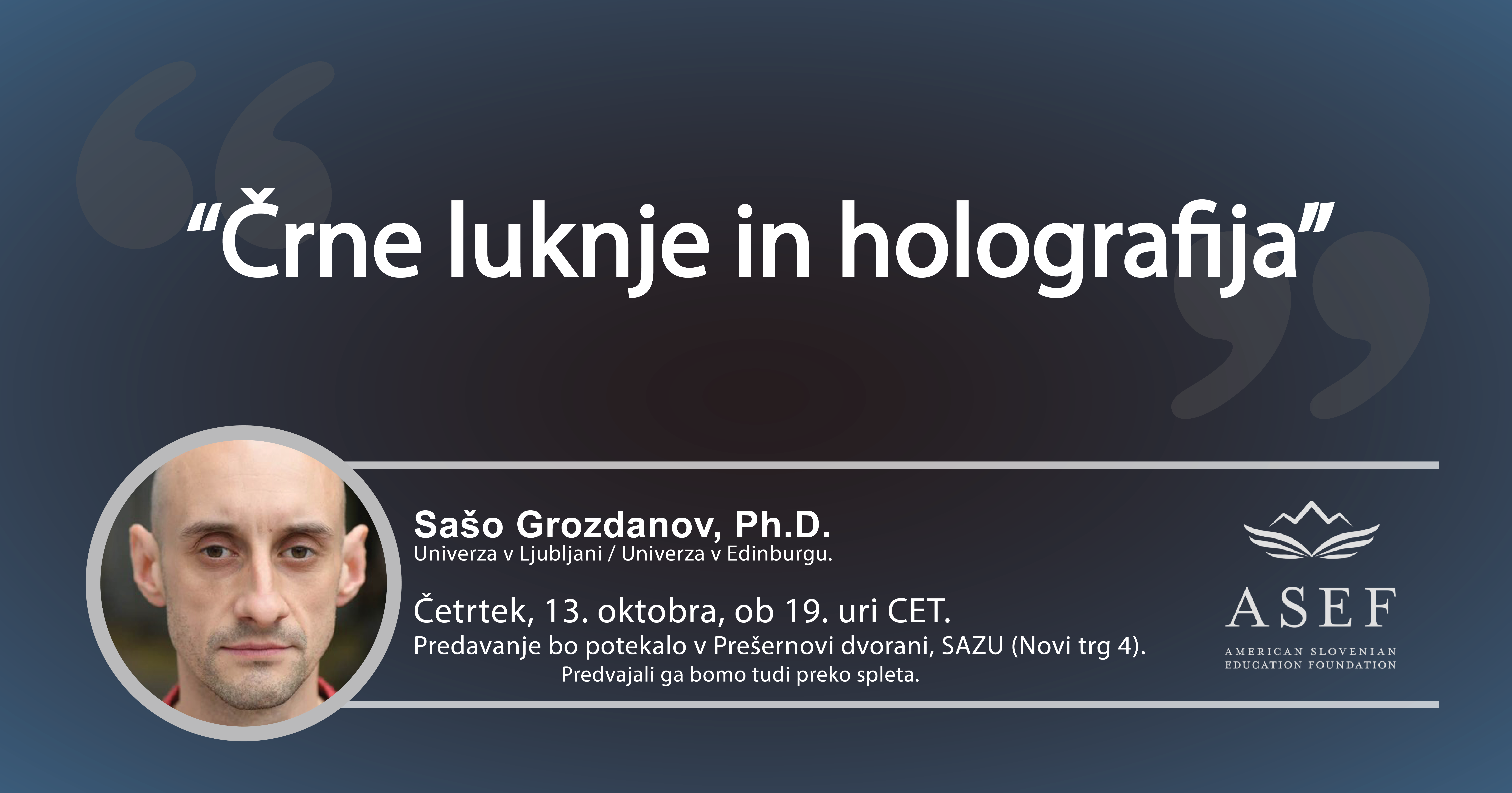
Dr. Sašo Grozdanov: Black Holes and Holography
The American Slovenian Education Foundation (ASEF) is organizing a new popular science lecture entitled Black Holes and Holography as part of the ASEF Speaker Series. The lecture will be held by dr. Sašo Grozdanov.
The lecture will take place on Thursday, October 13, starting at 7 p.m. in a hybrid version, in the Prešern Hall at SAZU (Novi trg 4, 1000 Ljubljana) and via Zoom. Pre-registration for the lecture must be done by October 13 at 6 p.m. at the latest. When registering for the event, the type of participation is selected (at the location or via Zoom). All registered participants via Zoom will receive a Zoom link to their email address before the event.
ABOUT THE LECTURE
The general theory of relativity is a description of the gravitational force as the geometry of space-time, formulated in 1915 by Albert Einstein. In the same year, Karl Schwarzschild solved Einstein’s equations for a spherically symmetric system and found the solution for the first black hole, which is named after him. What is a black hole anyway? The first part of the lecture will be devoted to the description of these universal and strange solutions of the theory, and to the presentation of the reasons for which we are convinced that black holes really exist in our universe. I will then present a more modern way of understanding black holes in the context of information theory and string theory (quantum gravity), from which it is clear that black holes ‘behave’ like holograms.
ABOUT THE LECTURER
Dr. Sašo Grozdanov is an associate professor of physics at the Faculty of Mathematics and Physics of the University of Ljubljana and a faculty member and Ernest Rutherford collaborator at the Higgs Center for Theoretical Physics at the University of Edinburgh. He received his BA from Harvard University, his MA from Cambridge University and his PhD from Oxford University. His broad interest is to discover the laws that govern physics using theoretical and mathematical methods ranging from low to high energies: from hydrodynamics to quantum field theory, gravity and black holes, and string theory. His work has focused heavily on studying the dynamics of hot collective states that behave like liquids and plasmas. An example of such a state is the quark-gluon plasma that filled the early universe and can now be created in particle accelerators.
ASEF connects scientists and academics all over the world.
The ASEF Speaker Series project is made possible with the financial support of the Government Office for Slovenians Abroad and the Office of the Republic of Slovenia for Youth.

